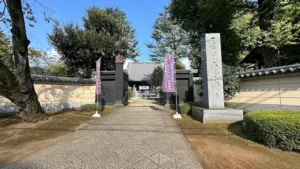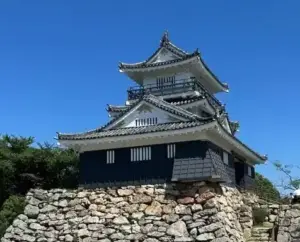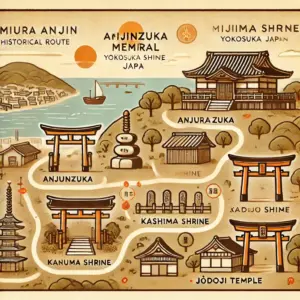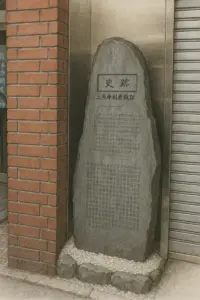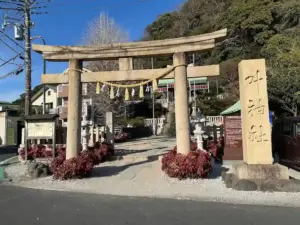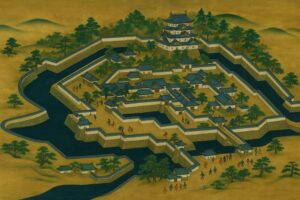Where Edo Lives On: Discovering the Samurai Legacy Beneath Tokyo’s Surface
Today’s capital, Tokyo, began as a small fishing village once known as “Edo.”
Its destiny changed dramatically thanks to Tokugawa Ieyasu. After his victory at the Battle of Sekigahara, Ieyasu established Edo as his base of power and founded the shogunate, ushering in a peaceful era that would last for about 260 years—known as the Edo period.
Edo eventually grew into one of the world’s largest cities. Following the Meiji Restoration, it was renamed Tokyo, and with the Emperor’s relocation from Kyoto, it became the political and cultural heart of modern Japan.
In Tokyo today, you’ll find numerous sites that preserve the memory of this historical evolution. From the **remains of Edo Castle (now the Imperial Palace)**, to neighborhoods like Ueno and Asakusa that retain the charm of Edo-period culture, and a range of Meiji-era architecture and museums—this city is a living crossroads of samurai heritage and modern transformation.
Tokyo is not just a sleek, modern metropolis—it is also a historic city where the era of the samurai and modern Japan coexist.
Places to Visit
Asakusa and the Tokugawa Shoguns: A Complete Guide to Sacred Sites Linked to Tokugawa Ieyasu
Did You Know About the Connection Between Sensō-ji and the Tokugawa Shogunate? The Era of Ieyasu — The Beginning of Edo's Patronage In 1590, after Tokugawa Ieyasu entered Edo, Sensō-ji Temple came under the protection of the shogunate. While Ieyasu’s ...
A Historical Journey Through Kaneiji Temple: Walking Among the Resting Places of the Tokugawa Shoguns
A Day Begins in the Tranquility of Ueno The sun was already beating down relentlessly on Ueno Park early in the morning. At 10:30 a.m., I arrived at the meeting point for the much-anticipated Kan'ei-ji Terakoya Experience & Tokugawa Shogunate ...
A Midsummer Return to Hamamatsu: A Day Exploring Landmarks Linked to Tokugawa Ieyasu
A midsummer journey through Hamamatsu, retracing the footsteps of Tokugawa Ieyasu.From Hamamatsu Castle to Gosha Shrine, Suwa Shrine, and the grave of Tsukiyama Gozen, I spent an entire day walking among sites that still echo the Sengoku era. Beneath the ...
William Adams (Miura Anjin) Travel Guide: Yokosuka Edition
📍 Tracing the Legacy of William Adams: A Yokosuka Walking Tour Ever wondered what it was like to walk in the footsteps of Japan’s first English samurai, William Adams?This self-guided walking tour takes you through the historic sites in Yokosuka ...
Miura Anjin’s Legacy in Tokyo: Historical Spots to Explore
A short walk from Tokyo Station, a monument quietly commemorates Miura Anjin (William Adams). This page explores the story behind this historic site. If you have a bit of spare time—perhaps while waiting for a Shinkansen—it’s well worth a brief ...
Uraga — Historic Sites Associated with Miura Anjin
Anjin, the blue-eyed samurai portrayed in the TV drama "SHŌGUN," was inspired by the real-life figure William Adams—known in Japan as Miura Anjin. One of the key places with which he was deeply involved was the port town of Uraga ...
Edo Castle – Tracing the Legacy of Tokugawa in the Heart of Tokyo
Fujimi Yagura Tenshu dai 🏯 Edo Castle: Tracing the Legacy of Tokugawa in the Heart of Tokyo ✨ Introduction Once the center of power for the Tokugawa shogunate, Edo Castle stood at the heart of what is now modern-day Tokyo—a ...
Tokugawa Ieyasu’s Historic Landmarks in Ueno, Ochanomizu, and Korakuen
Ueno Area Ueno Toshogu Shrine Ueno Toshogu Shrine is a Shinto shrine located in Ueno Onshi Park, Taito City, Tokyo. It enshrines Tokugawa Ieyasu, the founder of the Tokugawa Shogunate. Originally built in 1627, the shrine's current structure was reconstructed ...
Discover the Sacred Sites of Tokugawa Ieyasu: Nikko Edition
Discover the History of Nikko: A Walking Tour Embark on a special self-guided walking tour through the historic city of Nikko, tracing the footsteps of Tokugawa Ieyasu. This tour takes you through significant sites associated with the founder of the ...


